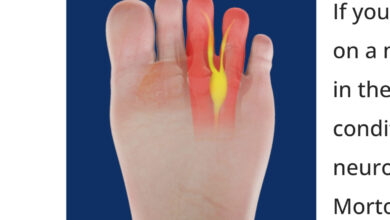BARIATRIC SURGERY: An Obesity Panacea!

Ok, I’ll admit it! One of my favorite television programs is “My 600-lb Life” on TLC. On this reality show, individuals who weigh 600 lbs or more are followed for one year during which they attempt to deal with their morbid obesity. These folks are from all over the country and narrate their personal stories of how they became so obese and how they are planning to lose weight. The program features a bariatric surgeon in Houston who is the physician these patients have contacted to oversee their quest for thinness. Since he is a surgeon, the central focus of the program is bariatric surgery, the preparation leading up to it, and the results patient’s experience after the procedure.
I find this program fascinating for a number of reasons. These patients have reached the point of desperation in their lives. Many are near death because their obesity and overeating have consumed them, controlled their lives, and destroyed their bodies. The testimonies about their childhood, teen years, marriages, divorces and the life incidents and traumas that lead them to use food for psychological comfort are incredible. The use of denial and excuse-making, and the relationship problems confessed by these folks is itself a course in psychology. Then the technical aspect of the various surgical procedures and video footage of the actual surgeries is very interesting. It’s rewarding to see these patients excitement each time they weigh in at follow-up appointments and see their self-esteem and self-image regain a sense of normalcy. These patients describe their journey as “getting my life back.”
Their panacea (cure-all answer) for obesity is bariatric surgery. They all beg for it and most folks on the program are approved for it after fulfilling criteria set by the doctor.
So what are some of those coveted, highly sought-after panaceas for obesity?
First, a review of the anatomy of the upper gastrointestinal tract is in order.
The ESOPHAGUS is the first part. A muscular cylinder/tube that carries food from the mouth to the stomach.
The STOMACH receives food from the esophagus. There are three parts to the stomach. The Fundus, or upper section, the Body or largest central part, and the Pylorus, the muscular exit valve of the stomach.
The DUODENUM is the first section of the small intestine and measures 8-12 inches.
The JEJUNUM is the second section of the small intestine, measuring approx 100 in.
The ILEUM is the final section of small intestine that attaches to the colon. It averages approx. 120 inches in length.
Bariatric Surgery makes use of the stomach, duodenum, and jejunum by removing parts of some of the structures or by re-routing the flow of food material through the GI tract.
These anatomical alterations contribute to weight loss in two distinct ways.
They RESTRICT the amount of food the stomach can hold thus reducing caloric intake.
They cause MALABSORPTION of food material by constructing a bypass of the stomach or part of the small intestine thus decreasing the amount of calories and nutrients the body absorbs.
These surgical procedures range from fairly simple to highly complex and are mostly done laparoscopically—or by what used to be called “belly-button surgery.” The more involved the operation the greater the rate of complications and problems, but also the greater the weight loss. For example, a Roux-en-Y gastric bypass, a multi-step procedure, results in a loss of 60-80% of excess body weight, and weight loss is maintained, while gastric banding, a less complex procedure, has a 40-50% loss of excess weight and can be overridden by patient overeating. Most of these procedures can also cause vitamin and mineral deficiencies, especially those procedures resulting in malabsorption. Calcium, iron, folate, vitamin D, and the fat-soluble vitamins A, D, E, and K are all affected and must be supplemented.
The most frequently performed bariatric surgical procedures are the following:
Roux-en-Y Gastric Bypass
Gastric Sleeve/Sleeve Gastrectomy
Duodenal Switch with biliopancreatic diversion
Lap-Band/Gastric Banding
Gastric Balloon
vBloc Therapy
Aspire Assist
An explanation of the first four procedures will follow next:
Roux-en-Y Gastric Bypass: As the name says, this procedure bypasses (eliminates) the stomach. The fundus (Upper stomach) is separated from the rest of the stomach and formed into a pouch. The Jejunum is divided and the bottom end is brought up and attached to the pouch so food goes directly from the stomach pouch to the mid small intestine. The remaining stomach and the first part of the small intestine are attached at the end of the intestine to the side of the jejunum. This allows stomach and duodenal digestive enzymes to still affect food digestion. The patient eats less and does not absorb food material resulting in significant weight loss.
Gastric Sleeve Gastrectomy: Here 80% of the stomach is removed and the first part of the small intestine, the duodenum, is attached to the newly-formed stomach pouch. This technique significantly restricts the amount of food the stomach can hold, but has no affect on absorption.
Gastric Banding: A band containing an inflatable balloon is placed around the upper part of the stomach and fixed in place making the stomach smaller and reducing its food capacity. The band and the size of the stomach opening can be adjusted by filling the band with sterile saline injected through a port placed under the skin. The stomach and small intestine remain in place and unaltered.
Biliopancreatic Diversion with Duodenal Switch Gastric Bypass: The duodenum is divided just past the outlet of the stomach (the pylorus). A large part of the stomach is removed and the remaining part, plus the fundus, form a tubular pouch/stomach which is attached to the divided end of the jejunum. Where the duodenum was divided, the end is sewn shut and the far end is attached to the side of the jejunum. Food is thus malabsorbed and the patient loses weight.
The majority of these bariatric procedures are complex and difficult to do, and explaining them without diagrams is a bit difficult. But I think I have conveyed generally how they work and what anatomical alterations are made. Six-hundred pound people have a lot of belly fat to go through to get into the abdominal cavity, but a good bariatric surgeon’s laparoscope will find its way to do these procedures without major problems. Again, the two principles of bariatric surgery, restriction and malabsorption, are employed here with amazingly good results.
The biggest disappointment with some of these procedures is seeing the patient lose hundreds of pounds only to have the operation fail to sustain the weight loss, and a year or two later the patient regains weight. Overriding the effects is common with gastric banding, but uncommon with Roux-en-y’s, gastric sleeves, and diversions.
Several weight loss devices have gained FDA approval. They do not permanently change the stomach or small intestine, and they cause less weight loss than bariatric surgery. They also haven’t been studied long enough to determine long term risks. They are:
Electrical Stimulation System—a device implanted in the abdomen by laparoscopy blocks nerve activity between the stomach and brain.
Gastric Balloon—one or two balloons are placed in the stomach through a nasogastric tube. Once in the stomach the tubes are filled with saline occupying space and making the patient feel full.
Stomach Drain Pump—food in the stomach is pumped out after a meal. The device includes a tube that goes from inside your stomach to a port on the outside of your abdomen. 20-30 minutes after eating, you attach the port to a pump which drains the stomach of about 30% of the calories you ate.
DR. G’s OPINION: These experimental devices certainly sound simpler and less invasive than the four surgical procedures, but the stomach drain pump sounds ridiculous to me. It’s like the doctor is forcing the patient to become bulimic. It seems the same result could be gotten if the patient just ate less. But people are overweight because they eat too much, and no one has yet found a consistently effective solution for that.
Bariatric surgery has only become a big thing in the last twenty years. It is effective. People lose weight and are usually very pleased with their results. In my experience, most patients had no problems, but one man developed a bowel obstruction from post operative adhesions about nine months after surgery. Most patients are diabetic before surgery. After bariatric surgery most patients were able to reduce their diabetes meds significantly, and one of my patients was able to go off her meds completely. One discouraging occurrence was the frequency with which patients regained lost weight. One female patient weighed about 375 when she had gastric stapling. After a year or so she was down to 225, but her operation failed to restrict her intake permanently, she returned to old eating habits, and regained all the weight she had lost. It was a real shame.
Vitamin and mineral deficiencies can be a real problem, too, and need to be watched for. Patients who have the Roux-en-y are prone to the “Dumping Syndrome.” Food passes through the intestine too fast and sugar is not absorbed. Patients get shaky, nauseous, sweaty, have diarrhea, abdominal cramps, and feel full. It can be a miserable situation, and most often improves over time.
Morbidly obese patients, those over 400 lbs, see bariatric surgery as a panacea. And for many folks it really is. Weight loss definitely occurs, but it’s not without sacrifice and suffering. “My 600-lb Life” vividly reveals the numerous interpersonal issues people with morbid obesity face. High rates of sexual abuse, parental neglect, divorce, pregnancy out of wedlock, depression, and low self image are common. “Weight loss surgery” is the means to a better life, or so they think, and for many it certainly is.
References:
niddk.nih.gov/weight-management/bariatric-surgery/types
obesityaction.org/choosing-the-right-weight-loss-surgery
stanfordhealthcare.org/medical-treatments/bariatric-surgery
mayoclinic.org/tests-procedures/gastric-bypass-surgery/weight-loss-surgery
Asmbs.org/patients/bariatric-surgery-procedures




